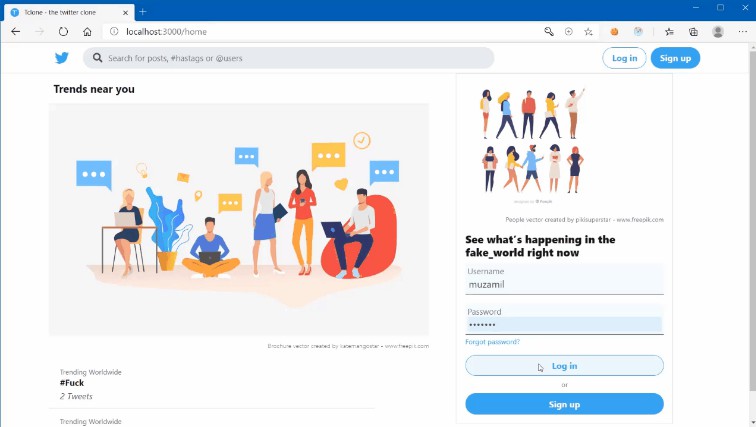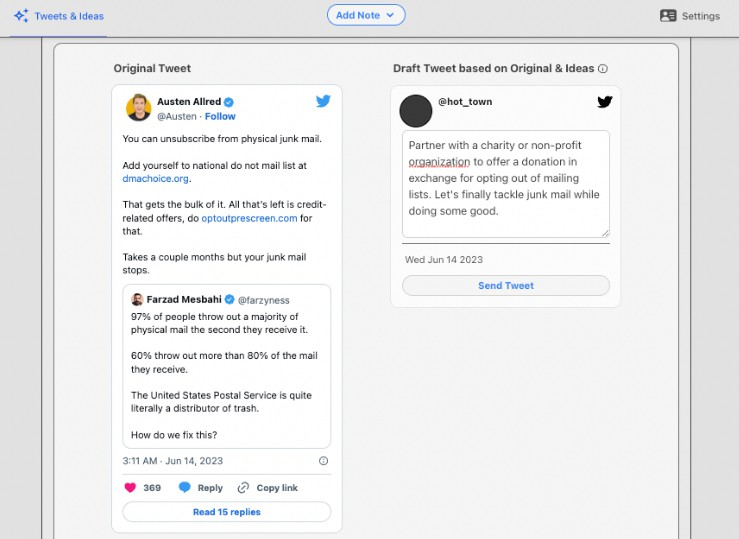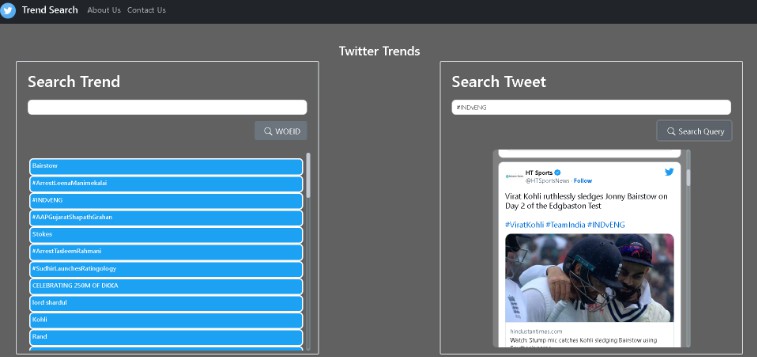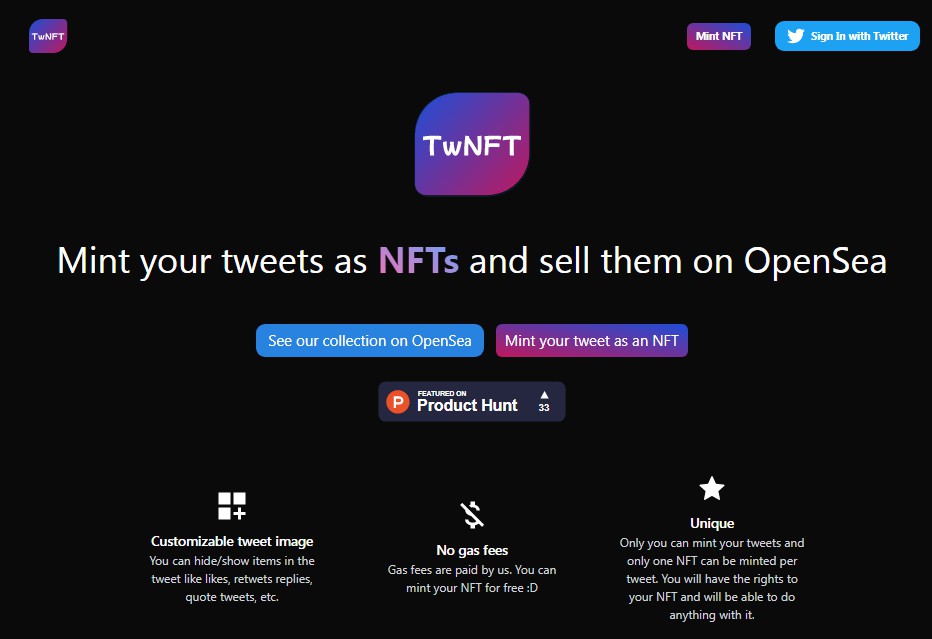React front-end for Twitter-Clone
Try it here back-end repo here
Kinda twitter, noott ?
It is my own take on building Twitter clone, I have tried to keep things simple and concise. With minimal modules needed, it is very lightweight and fast, yet functional and feature-rich.
Things working ⚡
-
State management (using redux-toolkit) Instead of having state in components itself, like I had previously, now most of the state is global in redux store. Posts, Users etc are in normalized form (by
createAdapter) and accessed using selectors and using CRUD methods (by adapter) thus sticking solely to ducks file pattern and redux-toolkit environment.- Authentication (simple yet effective, just works)
Authentication is done with passport local-strategy with sessions managed server side via cookies. Cookies are httpOnly so not accessible in javascript, log-in session is detected in React, at app start, by sending and checking get request to authenticating api, and subsequent api requests also check for
403, to destroy session, as an added measure (this is not done repeatedly but in single ‘fetch wrapper’ function which hadles all requests/src/api/request). Authentication state is stored now in redux store and also in sessionStorage for that fast auth reloads ??.
- Authentication (simple yet effective, just works)
Authentication is done with passport local-strategy with sessions managed server side via cookies. Cookies are httpOnly so not accessible in javascript, log-in session is detected in React, at app start, by sending and checking get request to authenticating api, and subsequent api requests also check for
-
Trends and User suggestions (It ain’t much but it’s honest work) Hashtags with higher number and recent posts are parsed and stored as trends, shown in sidebar or on explore page, you can click on them to search for posts with given hashtags. Users you are not following are also listed in ‘Who to follow’ card on sidebar, with priority based on followers (except mine, I will always be on top ?). Trends are now realtime, so go on rise your hastag to trending section ?.
-
Search (it is easily done through mongoDB queries but I was proud to have it ?) You can search for text that the posts contain or for hashtags (by prefixing search with #) and for users and user mentions (by prefixing query with @) and all of this just works and is enough to search through all of the database ?.
- Styling (using bootstrap) First step towards learning from my mistakes and improving this mess, i removed all of my custom css (courage ?), and replaced it with bootstrap classes, now DOM and directories are both clean and more portable, accessibility should improve and extensibility would now be easier . Bootstrap customization is mostly done with overriding Sass variables and also extending classes and adding my own ones too. Responsiveness is always kept in mind, so this single app also looks good on mobile devices.
-
Notifications (native and push) This is something i added to improve user engagement. You are prompted to allow notifications once in a while if not enabled (That’s not cheesy at all!) and when enabled, it sends push notifications about replies, likes, follows and things like that. Recent ones are also stored in
/notificationspage for easy access and this page gets refreshed (in background) once in a while and displays number badge for unread notifications too. Also worth mentioning is that native notifications (not the push ones) are not sent through sockets, as it is first guessed because Netlify (on which i host front-end right now) doesn’t support socket proxying (which is must, as i have cookie based auth). So as a workarroud, setInterval does the trick for now! -
Composing posts Though posts are primary text based(and emoji if it counts ?) and concise. Now i have added nice looking modals to write in, if that helps ¯\(ツ)/¯. Modal based compose is also capable of previewing posts, and is used in reply_posts and quote_posts to display preview of target_posts. Posts are also parsed for hashtags and usernames, like you can click on user_mentions or hashtags in post (after posting). There is also emoji-mart emoji picker for handy emoji insertion and gif picker can also be expected in near future (contribute ?). Link previews are also shown in posts using react-tiny-link
-
Pre populated posts (now DISABLED in main project, can be enabled in forks though).
when you open tclone, you see a bunch of users and their tweets (after you follow them). These are actual recent tweets of these accounts on Twitter and fetched via twitter api and then populated in database (so no, NASA didn’t log into this clone ?). Tweet Model on this project is exactly compatible with Tweet objects returned by Twitter api so you can pre populate you own set of tweets (parsed automatically) for your own fork of this project (Go make one, it feels good ?).
TODO
All those things which I want to do and makes me learn smarting new and …….. lets see what I can do ?♂️. Some of it would be
- Adding react-bootstrap for styling
- Adding Redux-toolkit for global state and utilities
- Likes, comments on post and maybe include retweets now.
- Using Modals and popovers’ for things like compose posts and hover on user-link for user detail (like twitter?).
- Notifications and improving engagement, this include general fixed and features
and maybe socket-api (lying useless in dependencies for ages now?). - Toasts for events like post posted, content updated, etc.
- Dark mode, not particularly excited about but will be fun messing with bootstraps sass variables and mixins.
- Custom/Cool/New features that even twitter would want to borrow ?. but for this community participation would be required.
Contributing
This is my favorite section. Just do it…? There are no guidelines for code or whatsoever and I never write tests ?. So just bombard me with pull requests ?.
Deploying
Current setup has front-end deployed on netlify with api calls connected to heroku api server via netlify redirects. It needs VAPID public keys corresponding to server keys for push notifications, and api server address to connect to api. Below is how your environmental variables should like (.env file on local and netlify variables when deployed on netlify)
REACT_APP_PUBLIC_VAPID_KEY=<corresponding public vapid key of vapid keys for push notifications>
REACT_APP_API_SERVER=<server url, like https://myserver.herokuapp.com for production>
Note: REACT_APP_API_SERVER key is not used in fetch calls, instead used to build netlify redirects and on local, fetch calls are proxied via proxy key in package.json. So if you plan to deploy it anywhere else, make edits accordingly.
After that it is easy, just install deps, and run npm run start for dev server and npm run build to build.
For more info on deploying server and generating VAPID keys see Deploy session of tclone-api
Footnote
If you are still reading up to this point, duuude you need to get your priorities right in life.






